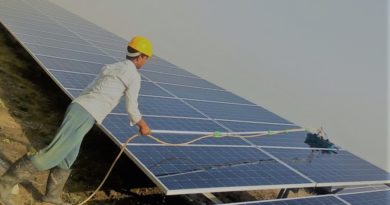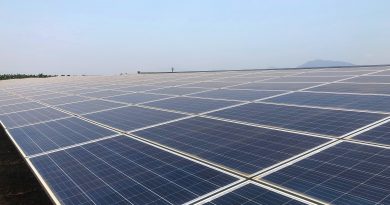Role of Water in long-term Performance of Solar PV Plants
In this article the discussion is being restricted to the usage of water which is used for solar panels cleaning; one of the key activities of solar PV plants maintenance services. Regular cleaning of the panels is carried out to avoid any generation loss due to dirty panels.
In India, usually 02 cycles of panel cleaning are carried out in all months except the monsoon month when 01 cycle cleaning is usually carried out. Cleaning requires considerable quantity of water, around 2.5 Litres per panel per cycle is the average water requirements. Considering a 10 MWp capacity plant has around 33000 panels, the water requirement per month will be 1,65,000 Litres for 02 cycles cleaning. This huge quantity of water requirement is creating enumerable stress on the areas which is already medium to high degree of water stressed.
Around 90% of the Solar PV assets are located into the water stressed areas of India. It is seen that around 70% of Solar assets are concentrated in 05 states (Karnataka, Rajasthan, Andhra Pradesh, Telangana & Tamil Nadu) and the plants are either in arid or medium to high water stressed regions.
If compared with other key power generating sources such as thermal, nuclear, etc. , the solar PV based power generation is much more water efficient ( 0.1 m3 per MWh in comparison to 2.2 m3 per MWh from thermal power plants). But the concern is due to its location into the water stressed areas.
Bulk of the water requirement (60%) is met by ground water through borewell and rest is met by surface water such as rivers, canals and lakes. The developers always prefer to use the ground water as this is free and whenever the developer has to use the surface water; they have to depend on the local contractors.
Not only quantity of water, the quality requirement also plays a major role in actual quantity of water usages. So, RO water is recommended to use for panels cleaning. A lot of water gets wasted in the RO process.
As more and more Solar Plants have come up and the water requirements have increased and so the price of water has also increased considerably making the projects unsustainable as per the project cost. So, water is very important to be used judiciously to ensure long-term operation and performance of the solar plant.
The policy makers also need to mention the water usages limit as well as water availability in an area prior to plan for a Solar PV projects so that the developers can remain mentally ready to select the cleaning pattern of the solar panels. There are alternative methods available such as robotic cleaning to do cleaning without water, but it may add to the project cost. Another possibility is to select panels with anti-soiling coating to reduce the water consumption by around 50 %. The other possibilities such as self-cleaning panels are still on test phase.
References: –
- Bridge to India- Water Use in Solar Power Sector
- https://www.energymatters.com.au/renewable-news/em426/


